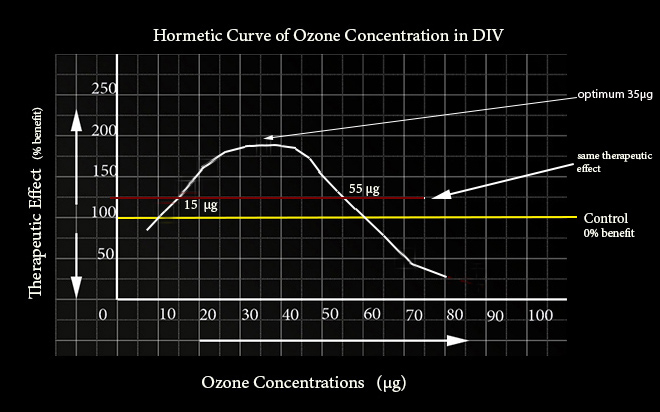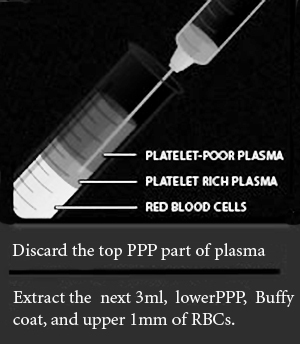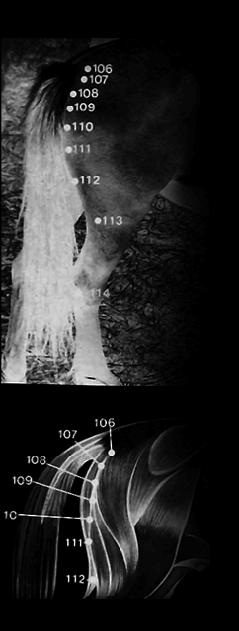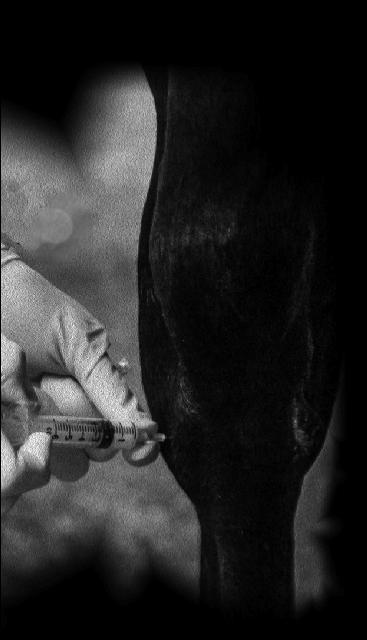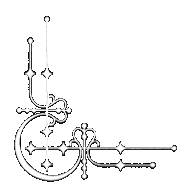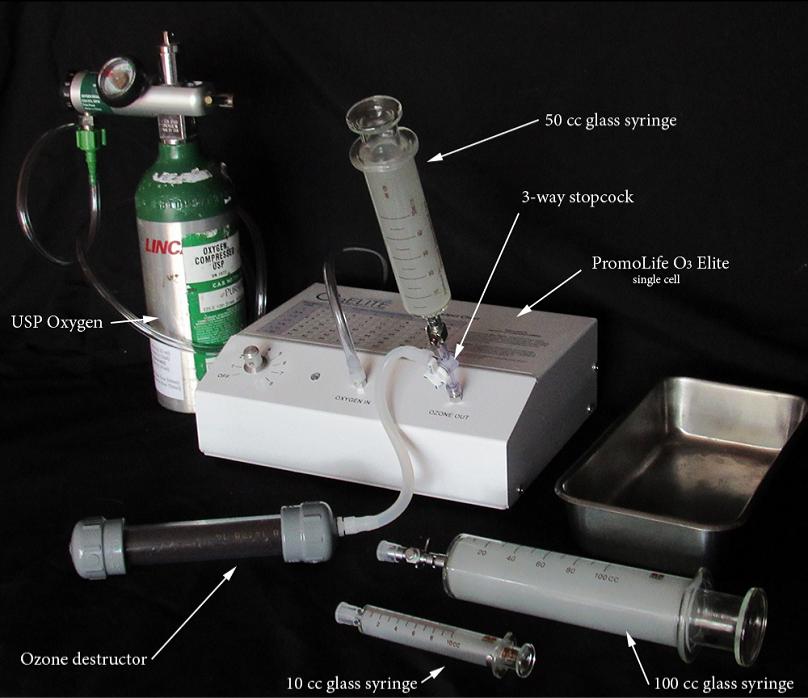Concentrations & Dosages:
Medical grade ozone generators generally have the capability to produce ozone from 1-100 ug/ml. Dosages and concentrations often use the term, "µg/ml" which is equal to micrograms of ozone per milliliter of solution.
1 ug/ml = 1 mg/l = 1 g/m3 = 1 gamma
Paracelsus is famed for saying: "What is there that is not poison? All things are poison and nothing is without poison. Solely the dose determines that a thing is not poison." This certainly applies to the use of ozone! Whether ozone is therapeutic or toxic is solely determined by its concentration and dose! Therapeutic ozone seems to follow the Hormetic model. Hormesis is a universal model seen throughout nature where an exposure to a low dose agent elicits a beneficial effect up to a point (typical U or J-curve) while at higher doses, it becomes increasingly less beneficial and even toxic. There is a sweet-spot at the top of the hormetic curve! Ozone has been medically used for well over 100 years, but it was the Russians that found low dose ozone to be the most efficacious. It is important to note that the slower the output of oxygen to the ozone generator, the more concentrated will be the ozone per ml of oxygen. This is why we need to employ a low-flow oxygen regulator when using a medical grade ozone generator. These low-flow regulators are often used in pediatric systems and may be sold as a pediatric regulator. They have air flows of 4 LPM or lower. We are interested in pediatric tank regulator capable of flow sequences of 1/32, 1/16, 1/8, 1/4, 1/2, 3/4, 1, 2, 3 L/min. The Drive, Pediatric CGA 540 Oxygen Regulator may be a good economical choice for our needs, but NOTE, all regulators should be checked by you for accuracy! Many have flow errors!
GENERAL EFFECTS OF DIFFERENT OZONE CONCENTRATIONS
1 to 55 ug/ml (< 3.5%) . . . . . . . . At this concentration level the 3 main health restoring properties of ozone are: 1) Oxidative influence on the oxygen metabolism (enhanced ATP production ), 2) Increases antioxidant enzymes in the body, 3) Activation of immuno-competent cells to stimulate the immune system --causing the greatest increase of immune system messengers interferon (50ug/ml gives greatest increase), Tumor Necrosis Factor(TNF) and Interleukin-2 (IL-2), setting off a cascade of positive changes throughout the immune system..
55 to 69 ug/ml range (3.5-5%) . . . . . . . . . . .Exhibits a strong germicidal effect by oxidative destruction, useful for killing bacteria, viruses and fungi, topically and internally, which makes ozone ideal for treating infected wounds, intestinal infections, vaginal infection and topical fungal diseases
> 70 ug/ml (>5%) . . . . . . . . . . . . . .Shown to suppress the immune system and inhibit tissue generation. Only applied the larger concentrations to ozonating water and oils--plus some topical applications.
Closer Examination of some Promising Protocols:
Intra-articular ozone Injections
I will tell you up front, unlike most trainers, I am not the least bit interested in pain relief nor too much in anti-inflammatory medications when it comes to training race horses, but I am vitally interested in joint regeneration! I think this procedure may offer some of the best therapeutical hope for injured racehorse joints than any thing to this date! This procedure is also known as "prolozone" therapy and is currently being used by Dr. Frank Shallenberger MD and Dr. Robert Rowen MD among many others to much success in their human practices. A few vets are doing it as well. Dr. Rowen has many YOUTUBE videos of case studies and I urge you to do a little research on what he has accomplished.
It is believed that ozone intra-articular injections can regenerate joints while not only relieving pain though there has been no widespread studies to definitively prove this illusive goal in the journals. There are anecdotal sets of x-rays that seem to suggest this in a "before" and "after" format showing cartilage regeneration. If these are legit? they are impressive, but I have long been a skeptic of the truth telling of most radiographs. X-rays can be deceiving and are highly dependent on the technical skills of the practitioner to my way of thinking for truthful diagnosis. However, these may be legit. One thing is for sure, human patients treated intra-articularly with ozone seem to be very happy people!
Prolozone therapy in the past seemed to have involved injecting a soup of compounds into the joint of which ozone was only one. Such components may include a formulation of procaine, anti-inflammatory homeopathics,
vitamins, minerals, proliferatives, and the signature ozone/oxygen mixture. I am not in favor of that and feel ozone should be able to stand on its own merits. Dr. Rowen seems to have limited his prolozone injections just to the ozone and procaine with a few exceptions of ozone only. I like that! Procaine was commonly used to numb the sting of ozone in its initial minutes of application to a joint. I don't think this is necessary in the horse, nor really most humans for that matter and may only cloud the issue. Certainly in the racehorse, we don't want procaine floating around in the system as it could easily cause a positive drug result. Ozone will not. So on this page, I only endorse the injection of a ozone/oxygen mixture, nothing else.
What can ozone theoretically do for a joint? It is Dr. Frank Shallenberger's theory that ozone therapy works by oxygenation of impaired joint tissue. Between the area of dead joint tissue and healthy tissue, there is a localized layer of tissue that is trapped in a state of impaired oxygen utilization. This tissue is not dead, but it is non-functional. Restoring oxygen utilization to these cells will often result in significant clinical improvement. Ozone improves oxygen utilization in a localized area of damaged connective tissue allowing it to heal and to restore full function. A similar healing phenomena also occurs in Myocardial hibernation and cerebral infarct. Shallenberger goes on to write: "Ligaments and joints are notoriously known as areas of decreased oxygen tension. The oxygen tension in a healthy ligament is often only one-tenth that of the tissue only several millimeters away from it. The same is true for joints. These areas are setups for developing a situation that involves a localized area of decreased oxygen utilization." So if athletic injury occurs in this joint, trauma stimulates edema & inflammation resulting in a further localized decrease in oxygen utilization. This decrease in oxygen utilization produces a localized increase in lactic acid production, free radical damage, and necrosis which serves as the foundation for further injury. A cascade of injurious processes follow of even more edema, inflammation, and decreased circulation resulting in further oxygen starvation. Even though stem cells and blast cells are present and waiting along with growth factors being released, healing does not occur. None of these natural healing mechanisms can be effective due to a lack of adequate oxygen utilization. It doesn't stop here. Ozone also has been shown to mediate, enhance, and promote growth factors important in tissue repair and regeneration. Lastly, there may be other factors involved that serve a purpose unique to ozone. For instance, because one is injecting a gas and not the usual liquid, gas by its nature can expand and cover all facets of the joint surface unlike a liquid which may pool or be restricted to coverage in the joint. Also, lets not forget that ozone is very anti-microbial and anti-toxin in nature. This action is not to be underestimated in therapeutic importance, particularly in case of infectious pathogens!
The results which can be expected from ozone injection are pain relief, anti-inflammation, healing and regeneration of damaged tissue. Lamberto Re, a soccer team physician in Italy routinely injects his team's injured joints with ozone without procaine resulting in improved healing and pain relief. Chronic areas of degeneration as seen in osteoarthritic knees, hips, and ankles will regenerate.
When injecting ozone/oxygen mixtures, always observe as aseptic technique as possible while also carefully scrubbing injection sites. Generally, 2-20 ug/ml concentrations are used in 1-20cc dosage volumes per joint. Treatment may be 1-2 times a week.


